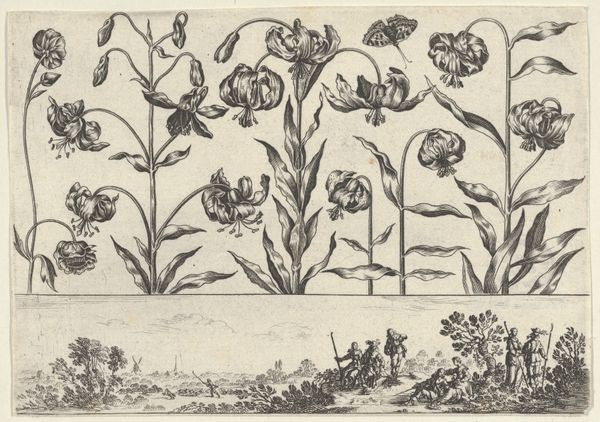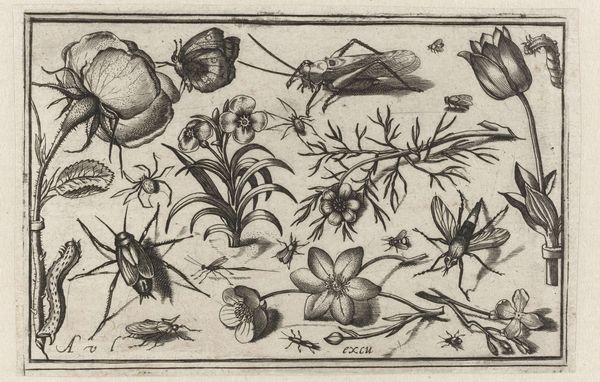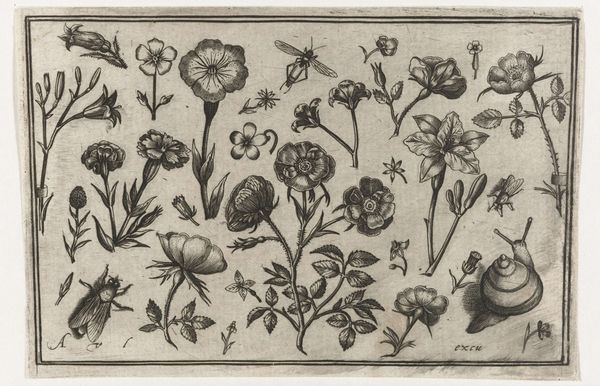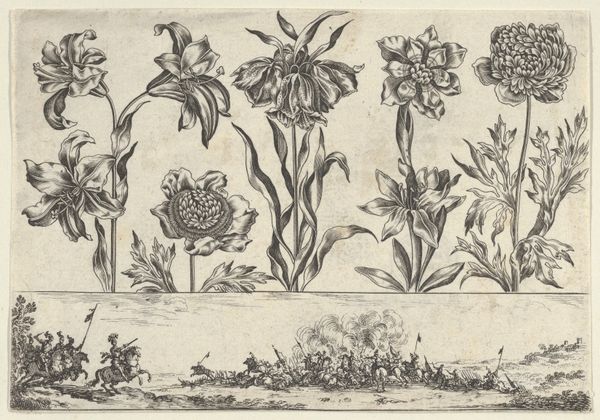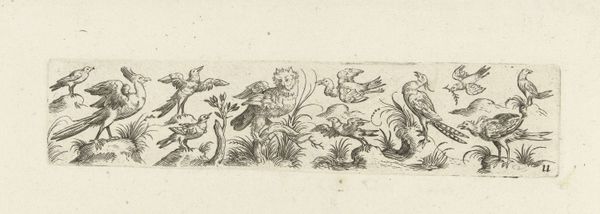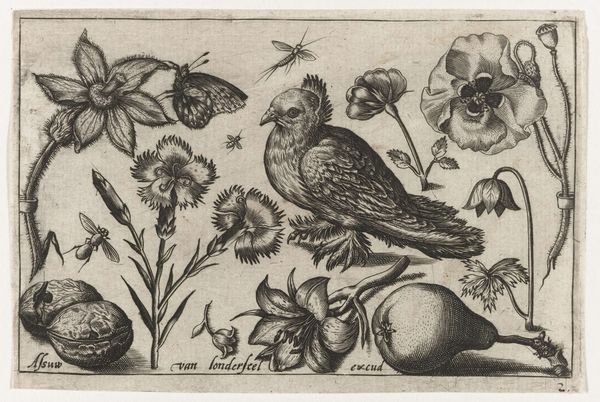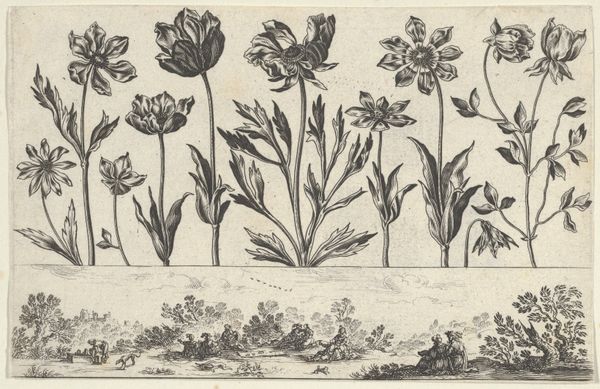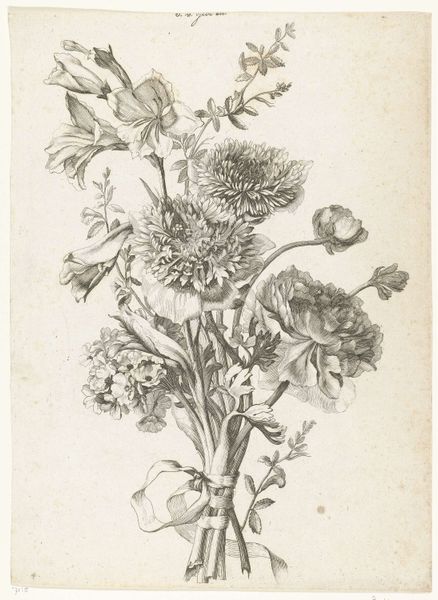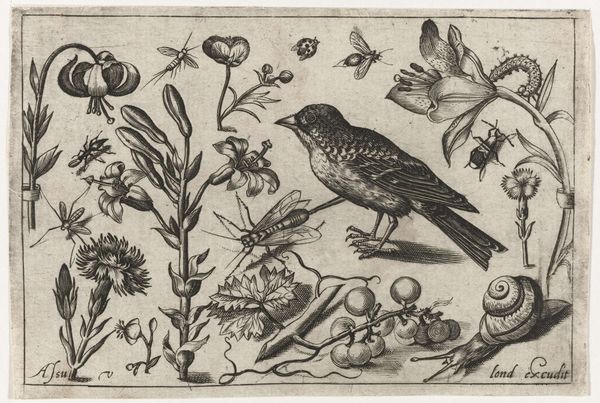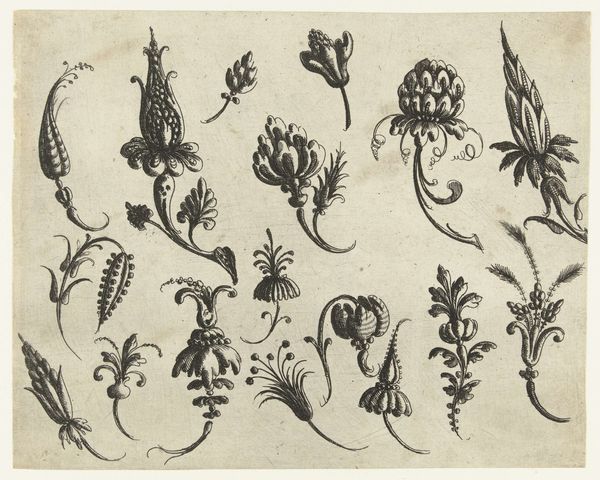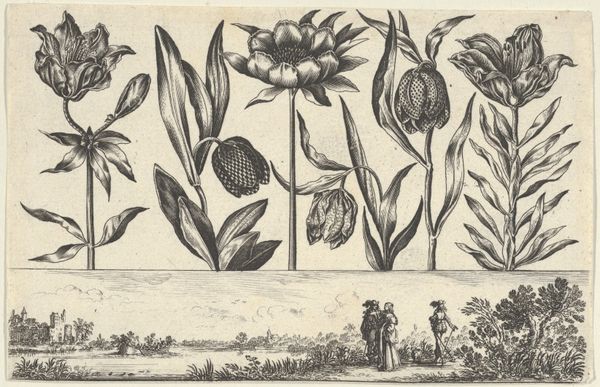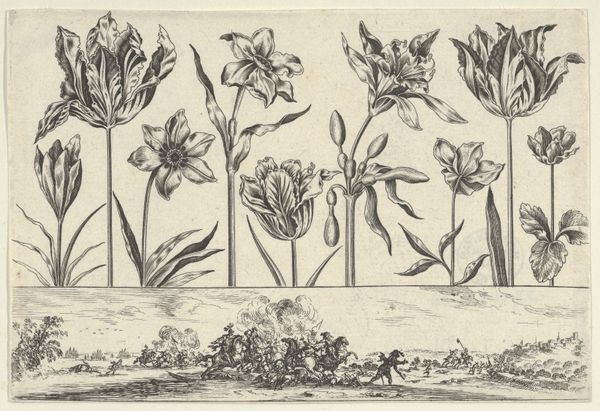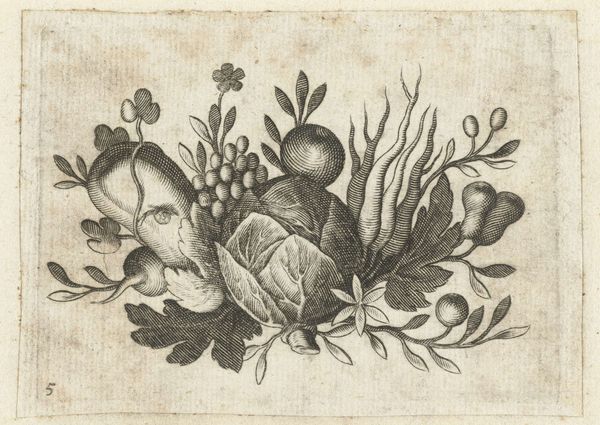
engraving
#
old engraving style
#
figuration
#
11_renaissance
#
line
#
northern-renaissance
#
engraving
Dimensions: height 95 mm, width 140 mm
Copyright: Rijks Museum: Open Domain
Editor: Here we have Nicolaes de Bruyn's "Flowers and Butterflies," created in 1594. It’s an engraving, full of meticulously rendered botanical and insect specimens. I'm struck by its almost scientific precision, but also its decorative quality. What do you make of this piece? Curator: It’s fascinating how the work straddles art and scientific illustration. In the late 16th century, the boundaries were blurred. Botanical prints like this one were becoming increasingly popular, fueled by growing global trade and a thirst for knowledge about the natural world. Editor: So, it’s tied to exploration and discovery? Curator: Absolutely. Consider the context. This was an era of extensive colonization and the rise of scientific societies. These kinds of images fed a European audience eager to catalogue and understand newly encountered flora and fauna. Were these engravings used for scientific research or decorative purposes? Do you see a clear function for art or science in here? Editor: I guess both! I see how this reflects a period keen to document the natural world but I had only thought of them as "still lifes". It's eye opening to consider this as part of the wider picture of the 16th Century. Curator: Exactly, it invites us to reflect on how the production and reception of images are shaped by broader social and intellectual trends, a very nice object of its time. It really reveals how even the seemingly innocent images can reflect significant shifts in power and knowledge. Editor: It's amazing to consider the social context and see how this artwork bridges different worlds, art and science, but also trade and exploration!
Comments
No comments
Be the first to comment and join the conversation on the ultimate creative platform.
